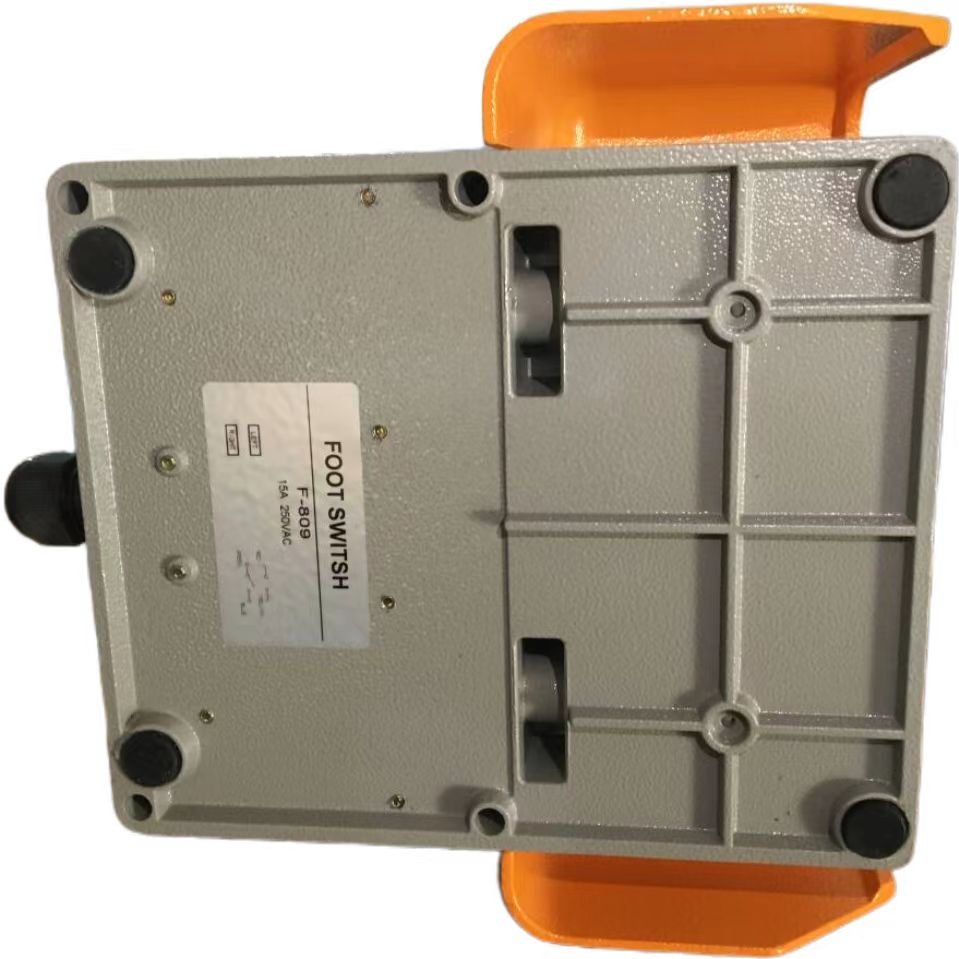

Heavy-duty foot switches are indispensable in industrial, manufacturing, and commercial settings, providing hands-free control for machinery, conveyor systems, and heavy equipment. Their robust design withstands frequent use and harsh conditions, but proper usage is critical to ensure safety, efficiency, and longevity. This article outlines essential guidelines for operating large foot switches effectively, covering installation, load management, environmental factors, and maintenance.
1. Pre-Installation Inspection and Compatibility Checks
Before integrating a heavy-duty foot switch, verify its specifications against your application’s requirements. Check key ratings such as voltage (AC/DC), current capacity, and IP protection level (e.g., IP65 for dust and water resistance). Inspect the switch for physical damage—cracks in the housing, loose pedals, or worn-out contact points—and ensure the mechanical structure (pedal, hinge, and return spring) moves smoothly without obstruction.
Confirm compatibility with your equipment’s control system, especially if the switch features specialized outputs (e.g., analog signals, relay contacts). Mismatched specifications can lead to electrical malfunctions, reduced sensitivity, or even catastrophic failures in high-load scenarios.
2. Proper Installation for Stable Operation
Secure mounting is foundational to safe usage. Heavy-duty foot switches often come with reinforced base plates or mounting brackets; use appropriate hardware (bolts, washers) to fasten them to flat, vibration-resistant surfaces. Avoid installing switches on unstable platforms or areas with excessive movement, as this can cause misalignment and premature wear.
For wired connections, follow the manufacturer’s wiring diagram to ensure correct polarity and grounding. Use shielded cables in high-electromagnetic environments to prevent signal interference, and strain-relief clamps to protect wires from tension or abrasion. Wireless models require clear line-of-sight for transmitters and receivers, with batteries or power sources checked for reliability before use.

3. Load Management and Operational Limits
Never exceed the switch’s rated load capacity. Heavy-duty foot switches are designed for specific current and voltage ranges—overloading can cause contact arcing, overheating, or pedal deformation. For inductive loads (e.g., motors, solenoids), ensure the switch includes surge protection or use external relays to handle transient currents.
Train operators to apply steady, controlled force to the pedal—avoid abrupt impacts or standing on the switch, which can damage internal components. For dual-pedal models, clearly label functions (e.g., “Start” vs. “Stop”) to prevent accidental misoperation, especially in fast-paced industrial environments.
4. Environmental Adaptation and Protection
Heavy-duty foot switches must withstand their operational environment. In dusty or wet settings, choose models with sealed enclosures and rubber gaskets to prevent debris ingress; regularly clean the pedal surface and housing to maintain responsiveness. In extreme temperatures (below -20°C or above 60°C), verify the switch’s thermal rating and consider additional insulation or cooling measures if needed.
For outdoor or corrosive environments, opt for switches with stainless steel or powder-coated aluminum casings to resist rust and chemical damage. Avoid exposing the switch to direct water streams or high-pressure cleaning unless it has a high IP rating (e.g., IP67 or higher).
5. Routine Maintenance for Longevity
Regular maintenance is key to extending the switch’s service life. Schedule monthly inspections to check for loose connections, worn pedal pads, or weakened return springs. Lubricate moving parts (hinges, linkages) with non-corrosive grease as recommended, ensuring no lubricant contacts electrical components. Test the switch’s functionality using a multimeter to confirm proper circuit activation and deactivation.
Keep a record of maintenance activities, noting any changes in pedal resistance or response time. Address minor issues promptly—e.g., tightening a loose mount or replacing a worn contact—to avoid escalating problems that could disrupt operations or compromise safety.

6. Safety Protocols and User Training
Prioritize safety by incorporating the foot switch into your facility’s overall safety plan. Install emergency stop (E-Stop) mechanisms near the switch for quick shutdowns in crises, and ensure the switch’s location is easily accessible but not a tripping hazard. Train operators on proper usage, emphasizing the importance of:
- Keeping hands clear of moving parts during operation.
- Wearing appropriate footwear (closed-toe shoes) to avoid injury.
- Reporting unusual noises, vibrations, or malfunctions immediately.
In multi-shift workplaces, implement a handover checklist to communicate the switch’s condition and any pending maintenance needs.
By following these guidelines, you can maximize the performance and safety of heavy-duty foot switches while minimizing downtime and repair costs. Attention to installation precision, load management, environmental protection, and regular upkeep ensures these critical components operate reliably, even in the most demanding applications.

